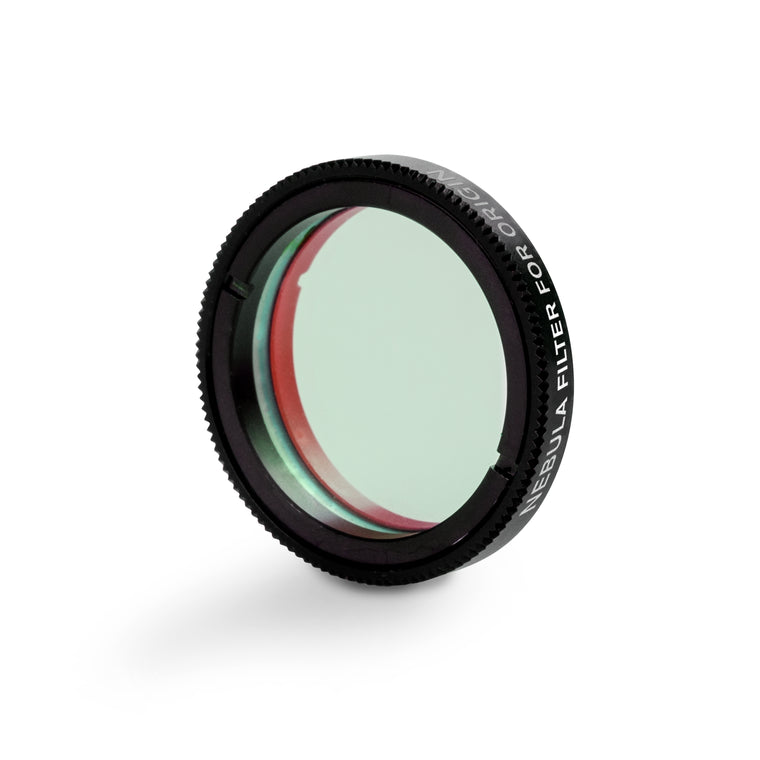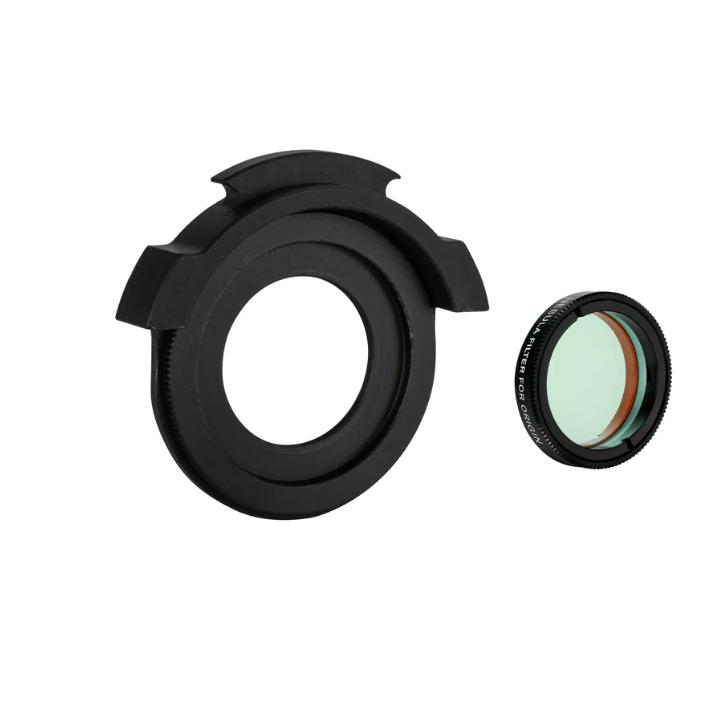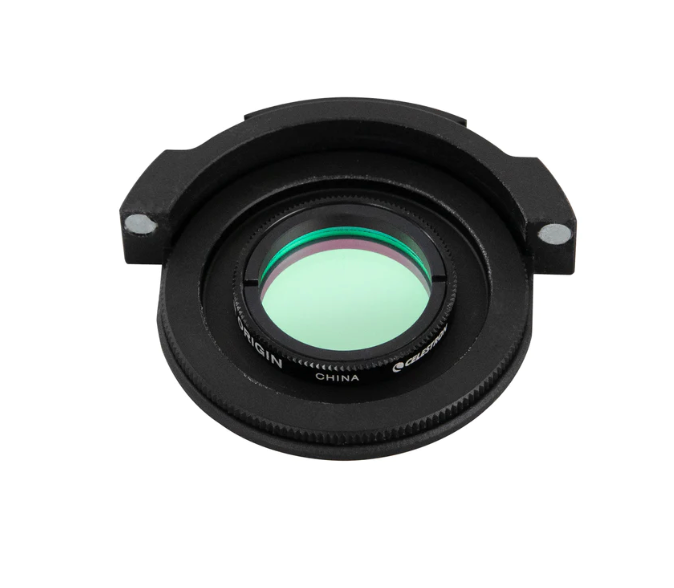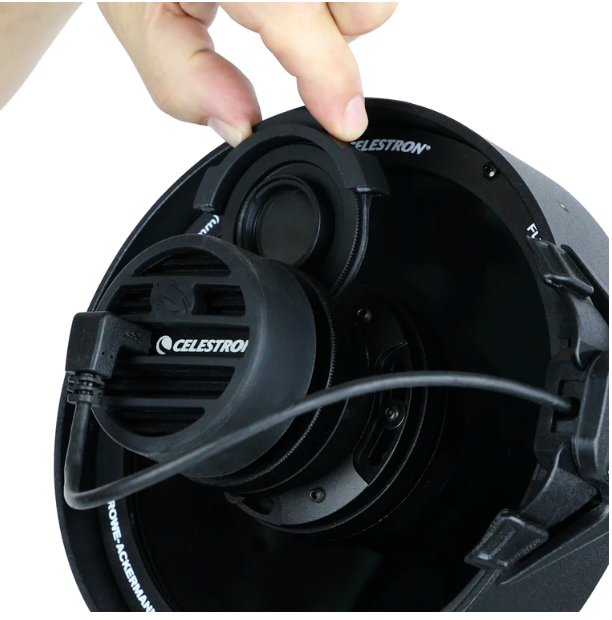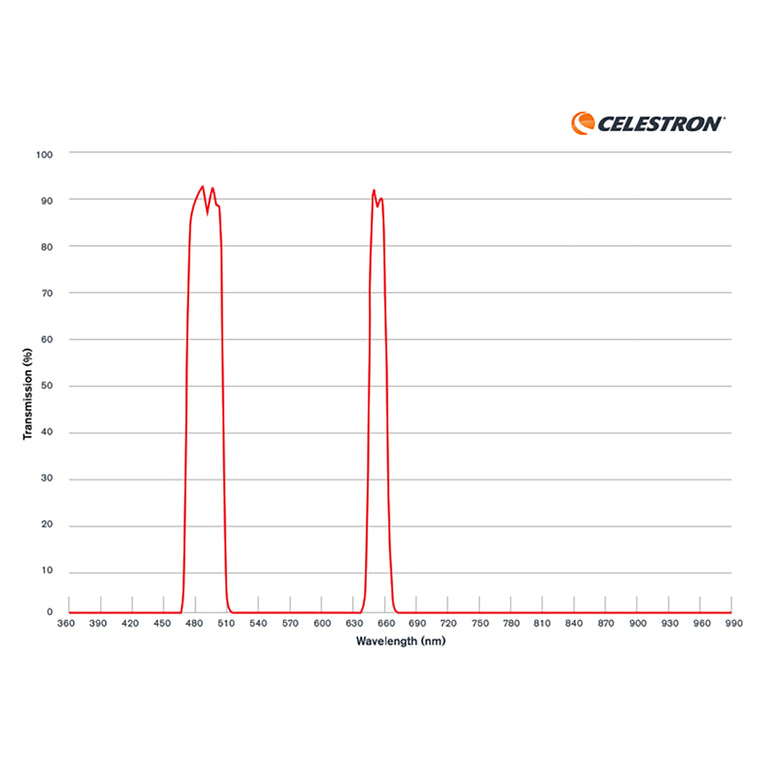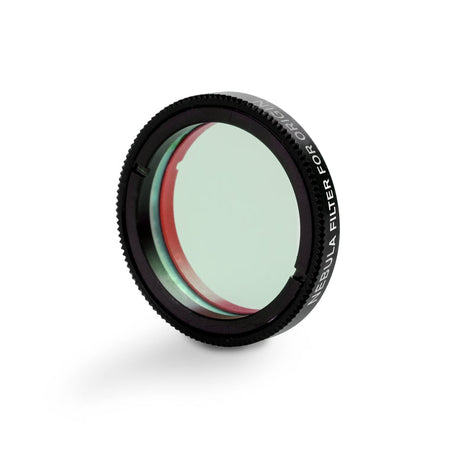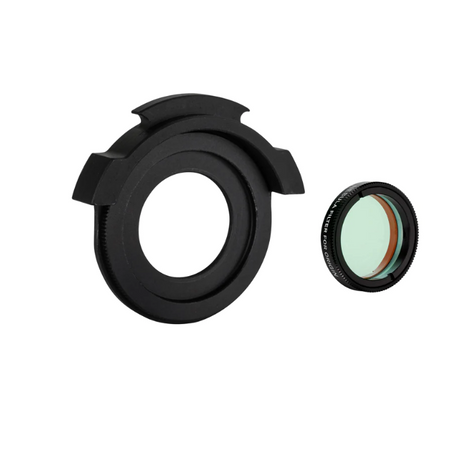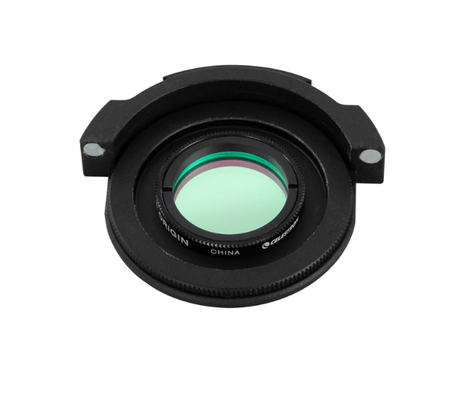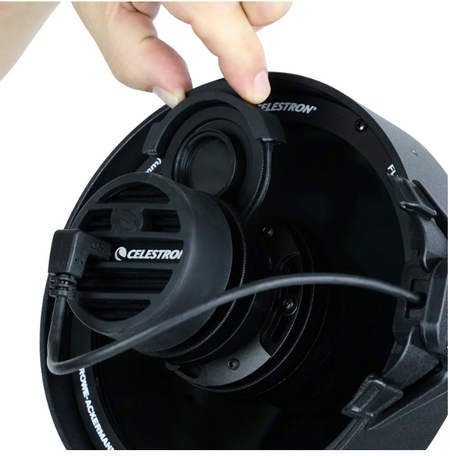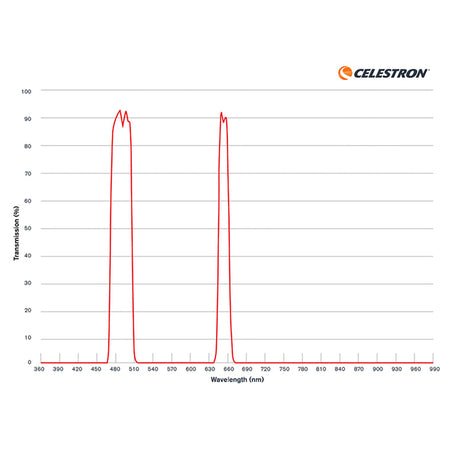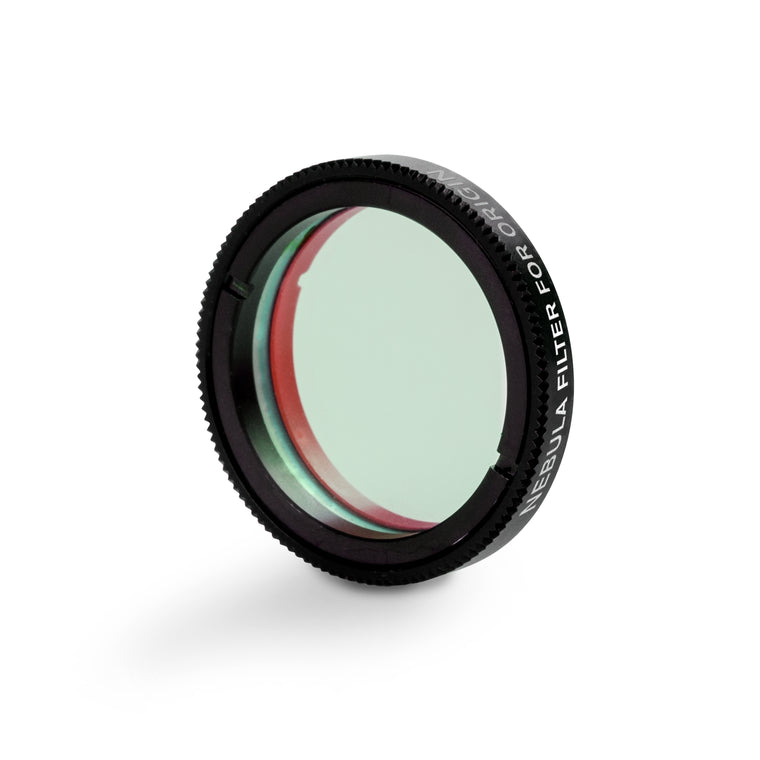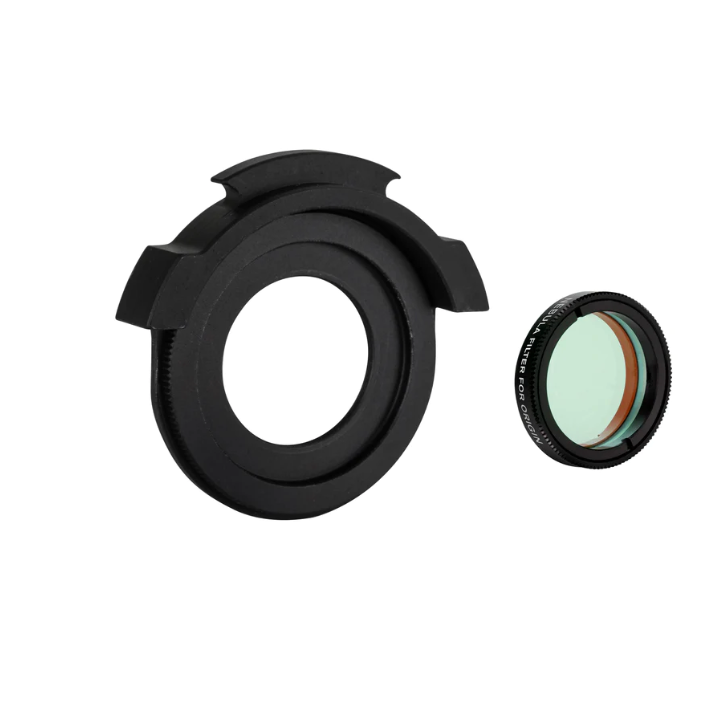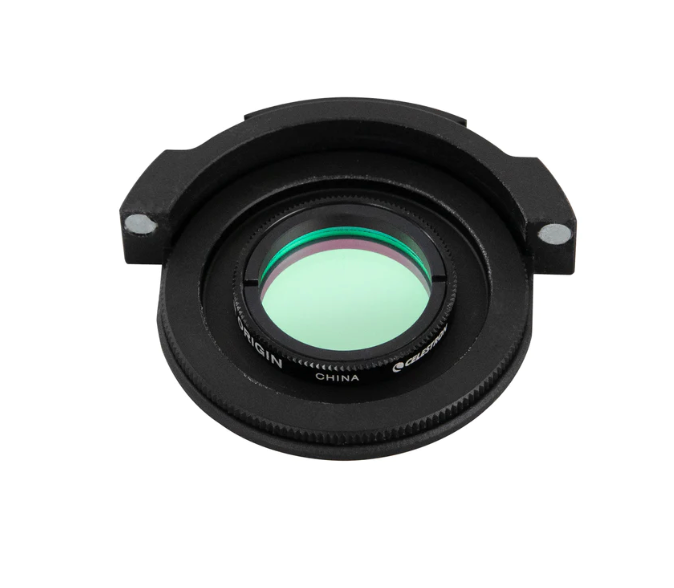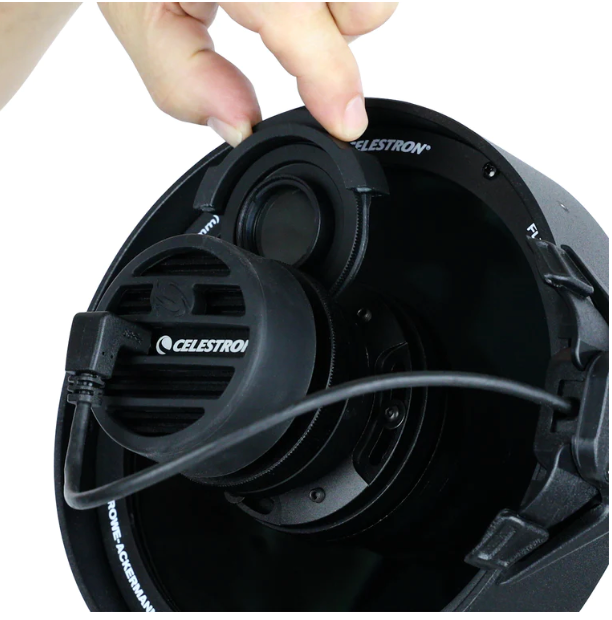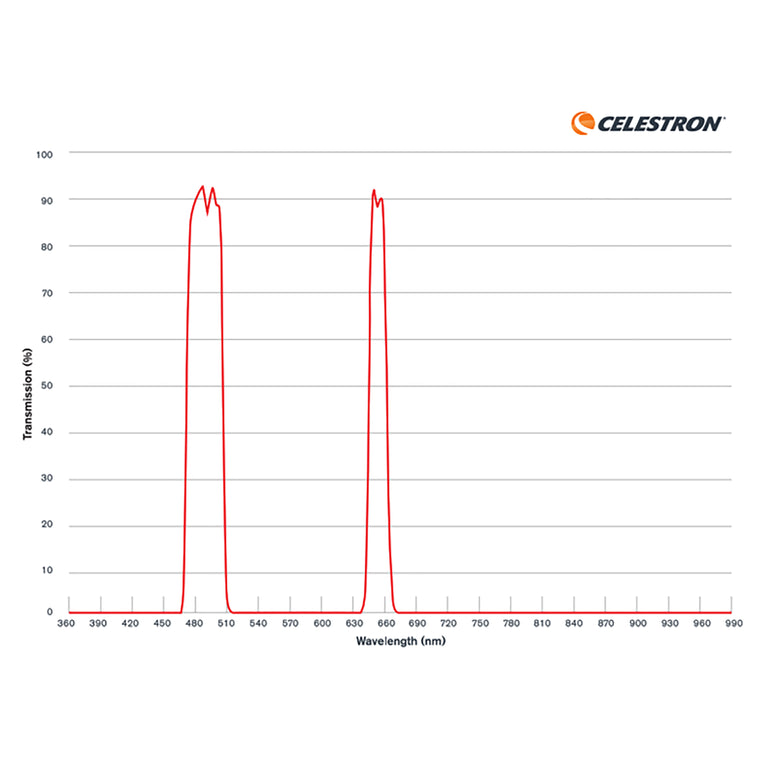Pickup available at Khan Scope Centre
Usually ready in 24 hours
Product details
- SKU CEL-93669
Nebula Filter & Holder for Origin Telescopes!
Take advantage of the innovative filter holder built into the design of the Celestron Origin Nebula Filter and experience better contrast when viewing emission nebula like the Orion Nebula, the Lagoon Nebula and dozens more, especially in areas with light pollution! This specialized filter blocks 0.5% of wavelengths that cause light pollution while allowing H-Alpha (656nm), H-Beta (486nm) and Oxygen III (496nm/501nm) emission nebulae wavelengths through. The result is a background sky that is darker without dimming the emission nebulae you are observing.
How does the Nebula Filter for Origin work? Emission nebulae primarily emit at discrete wavelengths of light—Hα at 656nm, Hβ at 486nm, and OIII at 496/501nm. By strategically transmitting only these wavelengths of light and blocking the rest of the spectrum, the filter dramatically reduces the effect of light pollution. The “bad” light is blocked while the “good” light associated with emission nebulae passes through to Origin’s sensor.
You’ll immediately notice much higher contrast in your images, especially from your light-polluted backyard! And since the transmission at the critical wavelengths is so high, the nebula will not be dimmed—only the background will be blacker. You’ll also notice some contrast improvement in images of nebulae from darker skies, as the filter serves well in blocking natural skyglow.
The Origin Nebula Filter is perfect for imaging emission nebulae like the North America Nebula (NGC 7000), Lagoon Nebula (M8), Orion Nebula (M42), the Carina Nebula (NGC 3372), and dozens more. The imaging filter offers maximum light transmission in the key Hα-Hβ-OIII wavelengths, producing high contrast for emission nebulae like these.
The transmission spectrum for the Celestron Origin Nebula Filter is 85% or greater at key wavelengths (486nm, 496nm/501nm, 656nm) and less than 0.5% transmission elsewhere. As a narrowband filter, it blocks much of the visible spectrum and only lets these specific wavelengths through. Because of this, you should not use this filter while observing or imaging broadband emission objects, such as galaxies and star clusters. For those objects, you’ll achieve the best results by removing the nebula filter and reinstalling Origin’s clear optical window.

